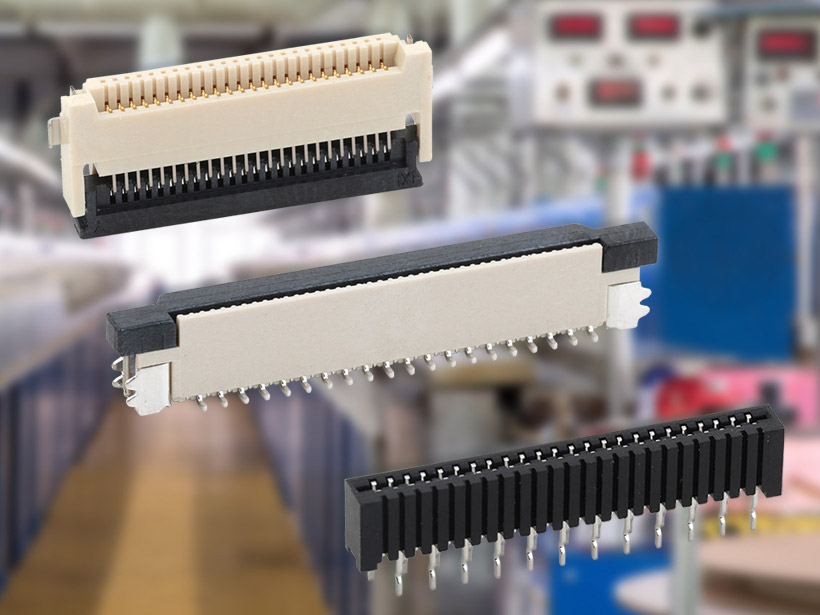Basic Knowledge of Surface Electroplating for FPC

FPC electroplating
(1) Pre-treatment of FPC electroplating
The pre-treatment cleaning process will have a significant impact on the basic characteristics of flexible printed circuit board FPC and sufficient attention must be paid to the treatment conditions. Generally, after the flexible printed circuit board FPC is subjected to the cover layer process, the copper conductor surface exposed may be contaminated by adhesives or ink, and may also have oxidation and discoloration caused by high-temperature processes. To obtain a tightly adhered coating, the pollution and oxidation layer on the conductor surface must be removed to make it clean. However, some of these pollutants are firmly combined with the copper conductor, and cannot be completely removed by weak cleaning agents. Therefore, people usually use alkaline grinding agents and brushing together to remove them. The adhesive of the cover layer is mostly epoxy resin, which has poor alkali resistance. This will cause a decrease in adhesive strength. Although it is not visibly noticeable, in the FPC electroplating process, the plating solution may penetrate from the edge of the cover layer, causing its peeling off, and the phenomenon of solder drilling into the cover layer may appear during final welding.
(2) Thickness of FPC electroplating
During electroplating, the deposition rate of the electroplated metal is directly related to the electric field strength, while the electric field strength varies with the shape of the circuit diagram and the position relationship of the electrode. Generally, the narrower the wire width, the sharper the terminal and the closer it is to the electrode, the greater the electric field strength and the thicker the plating layer at this position. In the applications related to flexible printed circuit boards, there are often many wires with very different widths in the same circuit, which makes it easier to produce uneven plating thickness. To prevent this situation, a branch cathode pattern can be attached around the circuit to absorb the uneven current distribution on the electroplating pattern and maximize the uniformity of the plating thickness at all positions. Therefore, effort must be made on the structure of the electrode. Here, a compromise solution is proposed. For parts with high requirements for uniform plating thickness, the standards are strict, while for other parts, the standards are relatively relaxed, such as the standard for electroplated lead-tin for melt-welding and the electroplated gold layer for metal wire overlap (welding). However, the requirement for the plating thickness of the lead-tin electroplating for general corrosion prevention is relatively relaxed.
(3) Stains and dirt on FPC electroplating
The newly electroplated coating state, especially the appearance, does not have any problems, but soon, some surfaces will show stains, dirt, discoloration, and other phenomena. Especially that nothing unusual is found during factory inspection, but when the user receives it for inspection, appearance problems are found. This is caused by insufficient drift, and there is residual plating solution on the surface of the plating layer, which is caused by the slowly undergoing of chemical reactions of a period of time. Especially for flexible printed circuit boards, due to their softness and unevenness, various solutions tend to accumulate in the depressions, and reactions and discoloration will occur at this position. In order to prevent this situation from occurring, not only sufficient drifting but also sufficient drying treatment must be carried out. Whether the drifting is sufficient can be confirmed by high-temperature aging tests.
FPC Chemical Plating
When the circuit conductor to be plated is isolated and cannot be used as an electrode, chemical plating must be used. The plating solutions commonly used in chemical plating have strong chemical effects, and the technology of chemical gold plating is a typical example. The chemical gold plating solution is an alkaline water solution with a very high pH value. When using this electroplating process, it is easy for the plating solution to penetrate below the covering layer, especially if the quality management of the covering film layer lamination process is not strict and the adhesion strength is low, this problem is more likely to occur.
Due to the characteristics of the plating solution, displacement reaction chemical plating is more likely to occur where the plating solution penetrates below the covering layer. It is difficult to obtain ideal electroplating conditions in this process.
FPC Hot Air Leveling
Hot air leveling was originally developed for the technology of coating lead-tin on rigid printed circuit boards (PCBs). Due to the simplicity of this technology, it is also applied to flexible printed circuit boards (FPCs). Hot air leveling involves immersing the board directly and vertically into a molten lead-tin bath, and then blowing away the excess solder with hot air. This condition is very demanding for flexible printed circuit boards (FPCs). If no action is taken on the FPC, it cannot be immersed in the solder. It must be sandwiched between titanium steel screens and then immersed in the molten solder. Of course, the surface of the FPC must be cleaned and coated with flux before the process. Due to the demanding conditions of the hot air leveling process, it is also easy for solder to penetrate from the end of the covering layer to below the covering layer, especially when the adhesion strength between the covering layer and the copper foil surface is low, this phenomenon occurs more frequently. Since polyimide films are prone to moisture absorption, when using the hot air leveling process, the moisture absorbed will cause the covering layer to bubble or even peel off due to rapid evaporation under high heat. Therefore, before performing FPC hot air leveling, drying treatment and moisture management must be carried out.





